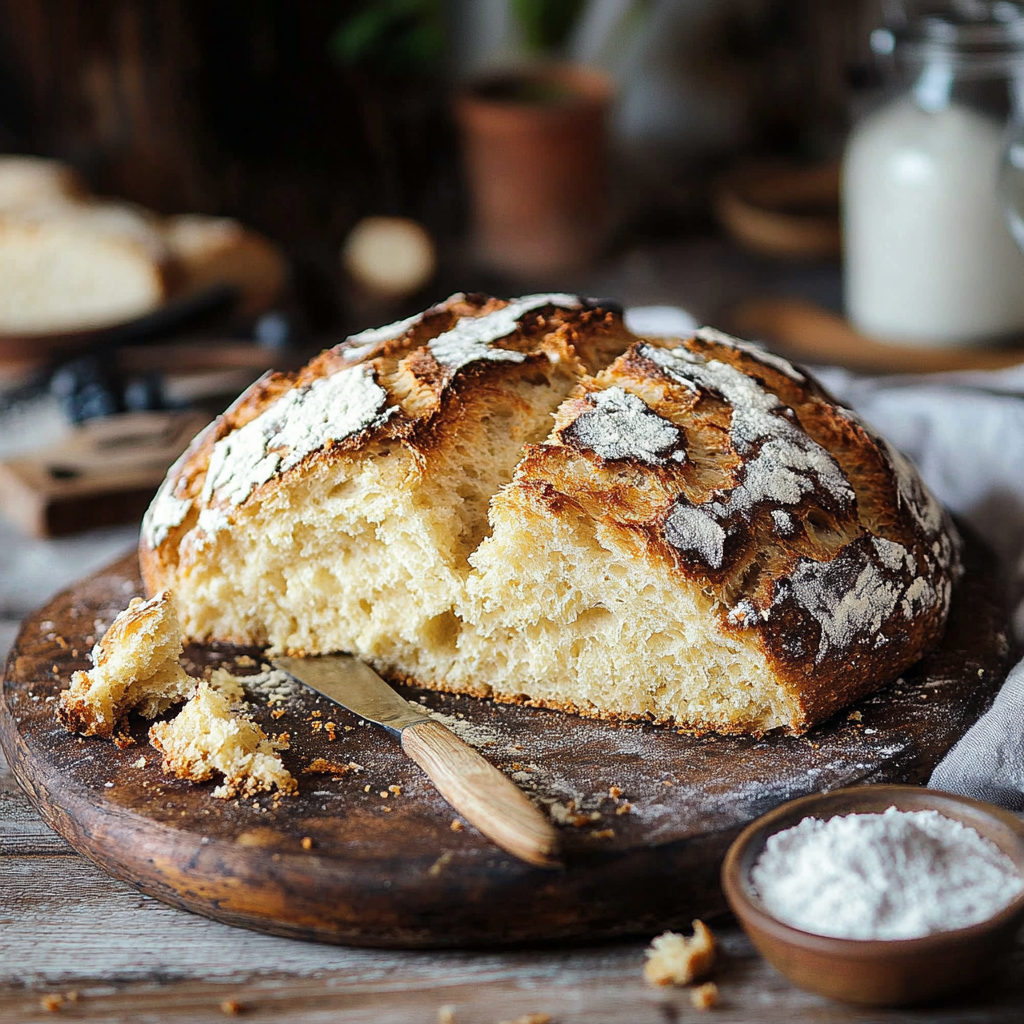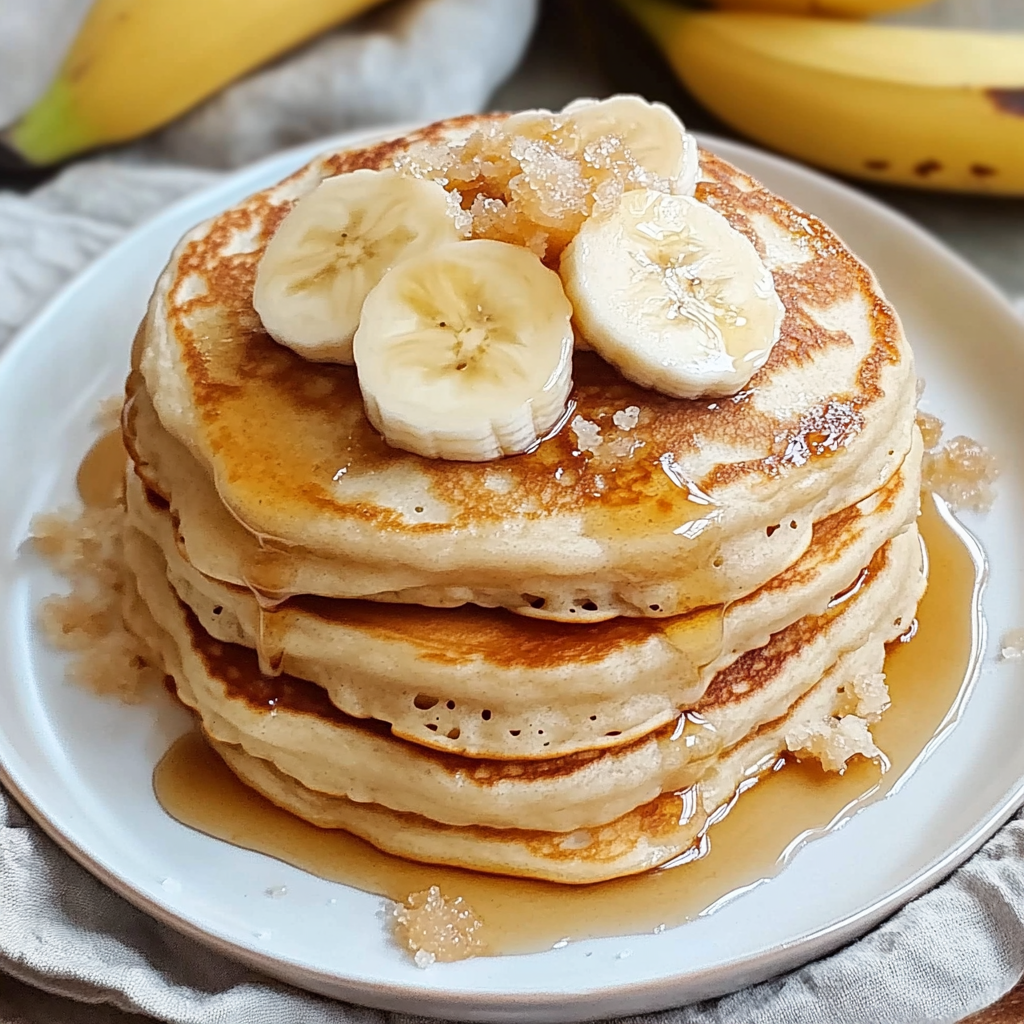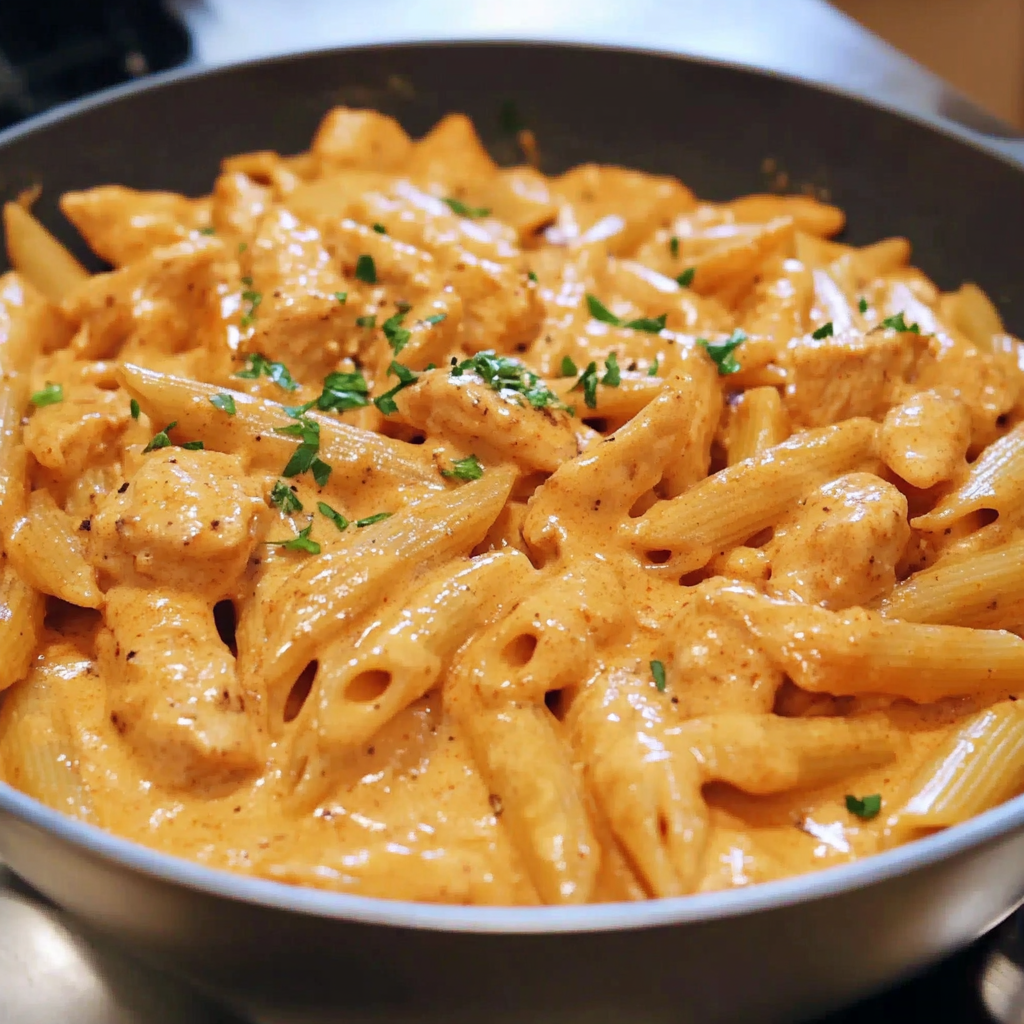Have you ever experienced the warm, inviting aroma of freshly baked bread wafting through your home? Imagine slicing into a loaf of Irish soda bread, revealing its tender crumb and golden crust. This simple yet delightful bread is a staple in many households and embodies the heart of Irish cuisine. With its rich history and easy preparation, it’s a dish that can elevate any meal.

Irish soda bread is not only delicious but also incredibly versatile. You can enjoy it slathered with butter for breakfast or served alongside hearty stews at dinner. Each bite offers a unique blend of flavors and textures that will leave your taste buds dancing with joy. Whether you’re celebrating St. Patrick’s Day or simply craving something comforting, this recipe promises to deliver an unforgettable experience.
Why You’ll Love This Irish Soda Bread
- Quick and Easy Preparation: This recipe requires no yeast or lengthy rising times, making it perfect for a last-minute baking project. In just an hour, you can have warm bread ready to enjoy.
- Delicious Flavor Profile: The combination of simple ingredients creates a wonderfully rich flavor that pairs well with sweet or savory toppings. The hint of sweetness from the sugar balances beautifully with the tangy buttermilk.
- Versatile Serving Options: Serve this soda bread with butter and jam for breakfast, or pair it with soups and stews for dinner. It’s adaptable to different meals throughout the day.

Ingredients for Irish Soda Bread
Here’s what you’ll need to make this delicious dish:
- All-Purpose Flour: Essential for structure; use unbleached flour for the best results.
- Baking Soda: This acts as the leavening agent, allowing the bread to rise without yeast.
- Salt: A crucial ingredient that enhances flavor; use fine sea salt for even distribution.
- Buttermilk: Provides moisture and a slight tanginess that complements the other ingredients perfectly.
- Casting Sugar (optional): Adds a touch of sweetness; use sparingly if desired.
The full ingredients list, including measurements, is provided in the recipe card directly below.
How to Make Irish Soda Bread
Follow these simple steps to prepare this delicious dish:
Step 1: Preheat Your Oven
Preheat your oven to 425°F (220°C). Prepare a baking sheet by lining it with parchment paper or lightly greasing it.
Step 2: Mix Dry Ingredients
In a large mixing bowl, combine the all-purpose flour, baking soda, salt, and sugar (if using). Whisk together until well mixed to ensure an even distribution of ingredients.
Step 3: Add Buttermilk
Make a well in the center of the dry mixture and pour in the buttermilk. Using your hands or a wooden spoon, mix gently until just combined. Avoid over-mixing to keep the texture light.
Step 4: Shape the Dough
Turn the dough onto a floured surface and gently knead it about five times until it’s smooth. Form it into a round loaf about one inch thick.
Step 5: Score the Top
Transfer the loaf onto your prepared baking sheet. Using a sharp knife, score an “X” on top about half an inch deep. This allows for proper rising during baking.
Step 6: Bake Your Bread
Bake in your preheated oven for approximately 30 minutes or until golden brown on top and sounds hollow when tapped on the bottom. Let cool slightly before slicing.
Transfer to plates and enjoy slices fresh from the oven.

Tips and Tricks
Here are some helpful tips to ensure the best results for your dish:
- Use Fresh Ingredients: Ensure your baking soda is fresh for optimal rising; expired baking soda can lead to dense bread.
- Don’t Over-Knead: Knead just enough to bring ingredients together; over-kneading can create tough bread.
- Experiment with Add-Ins: Consider adding raisins or caraway seeds for added flavor dimension.
Mistakes to avoid
- Using the wrong flour: One of the most common mistakes when making Irish Soda Bread is using the incorrect type of flour. To achieve the perfect texture, opt for all-purpose flour or a mix of whole wheat and all-purpose flour. Avoid using bread flour, as its higher protein content can lead to a denser loaf. The right flour will ensure that your Irish Soda Bread rises beautifully and has that signature soft crumb.
- Over-kneading the dough: Kneading is essential, but overdoing it can ruin your Irish Soda Bread. The goal is to mix the ingredients until just combined. Over-kneading develops gluten, making the bread tough rather than tender. Aim for a soft dough that holds together without being overly smooth. Remember, this bread is meant to be rustic and hearty.
- Ignoring the baking soda: Baking soda is crucial in Irish Soda Bread; it acts as a leavening agent. Make sure your baking soda is fresh for optimal results. If it’s expired, your bread may not rise properly. Additionally, ensure you mix it well with the dry ingredients before adding any liquids. This ensures an even distribution throughout the dough.
- Not shaping the loaf correctly: How you shape your Irish Soda Bread affects its final appearance and texture. A round or oval shape works best for even cooking and presentation. Avoid pressing down too hard while shaping; this can deflate the dough and hinder rising during baking. Ensure you create a slight dome shape to help with oven spring.
- Baking at the wrong temperature: Temperature plays a key role in baking Irish Soda Bread. Preheat your oven to at least 425°F (220°C) before placing the loaf inside. If your oven isn’t hot enough, your bread may not rise properly or achieve a golden crust. Using an oven thermometer can help ensure accuracy for perfect results every time.
Serving Suggestions
This Irish Soda Bread is versatile and pairs wonderfully with:
- Butter and Jam: Spread a generous layer of butter on a warm slice, then top it with your favorite jam for a sweet treat.
- Cheese Platter: Serve it alongside a selection of cheeses, such as aged cheddar or creamy brie, to enhance your snack experience.
- Soup or Stew: Enjoy Irish Soda Bread as an accompaniment to hearty soups or stews. It soaks up flavors beautifully, making each bite satisfying.

FAQs
What is the history of Irish Soda Bread?
Irish Soda Bread has a rich history dating back to the 19th century. It became popular when baking soda was introduced as a leavening agent, making bread easier and quicker to prepare. Traditionally made with simple ingredients like flour, baking soda, salt, and buttermilk, this bread reflects the resourcefulness of Irish families who often used what they had on hand. Over time, variations emerged that included additional ingredients like raisins or seeds, adapting to regional tastes.
Can I make Irish Soda Bread without buttermilk?
Absolutely. If you don’t have buttermilk on hand, you can create a substitute by mixing regular milk with an acid. Simply add one tablespoon of vinegar or lemon juice to one cup of milk and let it sit for about five minutes. This mixture will mimic the acidity of buttermilk and work perfectly in your Irish Soda Bread recipe. The right acidity helps activate the baking soda for a good rise.
How long does Irish Soda Bread last?
Irish Soda Bread is best enjoyed fresh but can last for about two days at room temperature when stored in an airtight container. After that, it may start to dry out. To extend its shelf life, consider freezing it. Wrap slices in plastic wrap and then place them in a freezer bag; they can be frozen for up to three months. When ready to eat, simply thaw at room temperature or toast directly from frozen.
Can I add ingredients like nuts or fruits to my Irish Soda Bread?
Yes. Adding nuts or dried fruits can enhance your Irish Soda Bread’s flavor and texture. Popular additions include walnuts, pecans, raisins, or currants. To incorporate these ingredients successfully, fold them into the dough just before shaping it into a loaf. This way, you’ll enjoy delightful bursts of flavor in every slice.
Conclusion for Irish Soda Bread
In summary, Irish Soda Bread is not only easy to make but also incredibly versatile in its serving options. Whether slathered with butter and jam or paired with savory dishes like soup and stew, this bread complements various meals beautifully. The unique history behind this simple recipe enhances its charm and significance in Irish culture. Remember that while traditional recipes are delightful, experimenting with different add-ins can personalize your loaf even further. Enjoy baking this classic dish at home and share it with family and friends for a true taste of Ireland.

Traditional Irish Soda Bread
5 Stars 4 Stars 3 Stars 2 Stars 1 Star
No reviews
- Author: Emma
- Total Time: 45 minutes
- Yield: Approximately 8 servings 1x
Description
Irish Soda Bread is a beloved staple of Irish cuisine, offering a delightful blend of simplicity and flavor. This quick bread, made without yeast, is incredibly easy to whip up and can be enjoyed warm from the oven in under an hour. With its golden crust and soft, tender crumb, each slice is perfect for breakfast with butter and jam or as an accompaniment to hearty soups and stews. The use of buttermilk gives this bread a subtle tang that beautifully balances the sweetness from sugar, making it irresistible. Whether you are celebrating St. Patrick’s Day or simply craving comfort food, this traditional Irish soda bread recipe will undoubtedly impress your family and friends.
Ingredients
- 4 cups all-purpose flour
- 1 teaspoon baking soda
- 1 teaspoon salt
- 1¾ cups buttermilk
- 2 tablespoons sugar (optional)
Instructions
- Preheat the oven to 425°F (220°C) and line a baking sheet with parchment paper.
- In a large bowl, whisk together the flour, baking soda, salt, and sugar until well combined.
- Create a well in the dry mixture and pour in the buttermilk; mix gently until just combined.
- Turn the dough onto a floured surface, knead lightly about five times, then shape it into a round loaf.
- Score an 'X' on top of the loaf with a knife and place it on the baking sheet.
- Bake for about 30 minutes until golden brown and hollow when tapped; cool slightly before slicing.
- Prep Time: 15 minutes
- Cook Time: 30 minutes
- Category: Bread
- Method: Baking
- Cuisine: Irish
Nutrition
- Serving Size: 1 serving
- Calories: 130
- Sugar: 1g
- Sodium: 150mg
- Fat: 1g
- Saturated Fat: 0g
- Unsaturated Fat: 0.5g
- Trans Fat: 0g
- Carbohydrates: 25g
- Fiber: 1g
- Protein: 4g
- Cholesterol: 0mg







